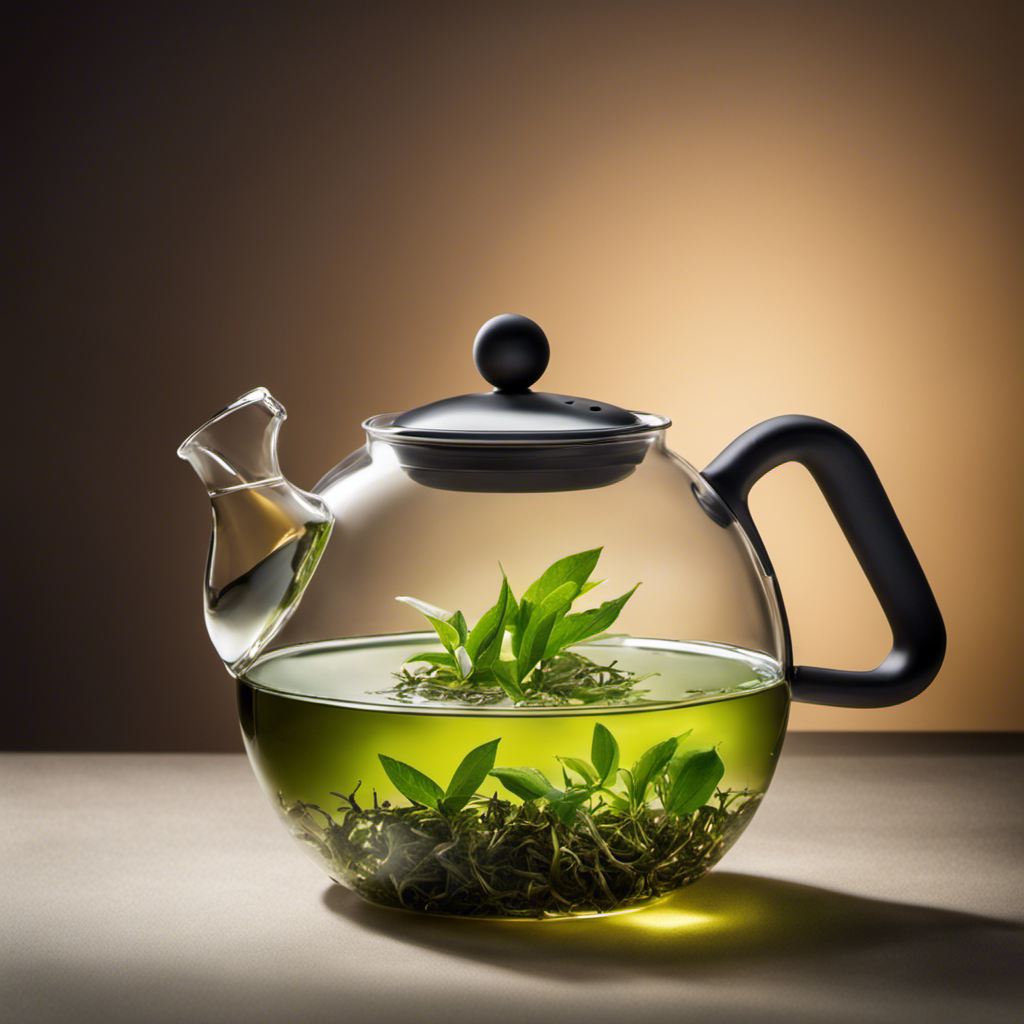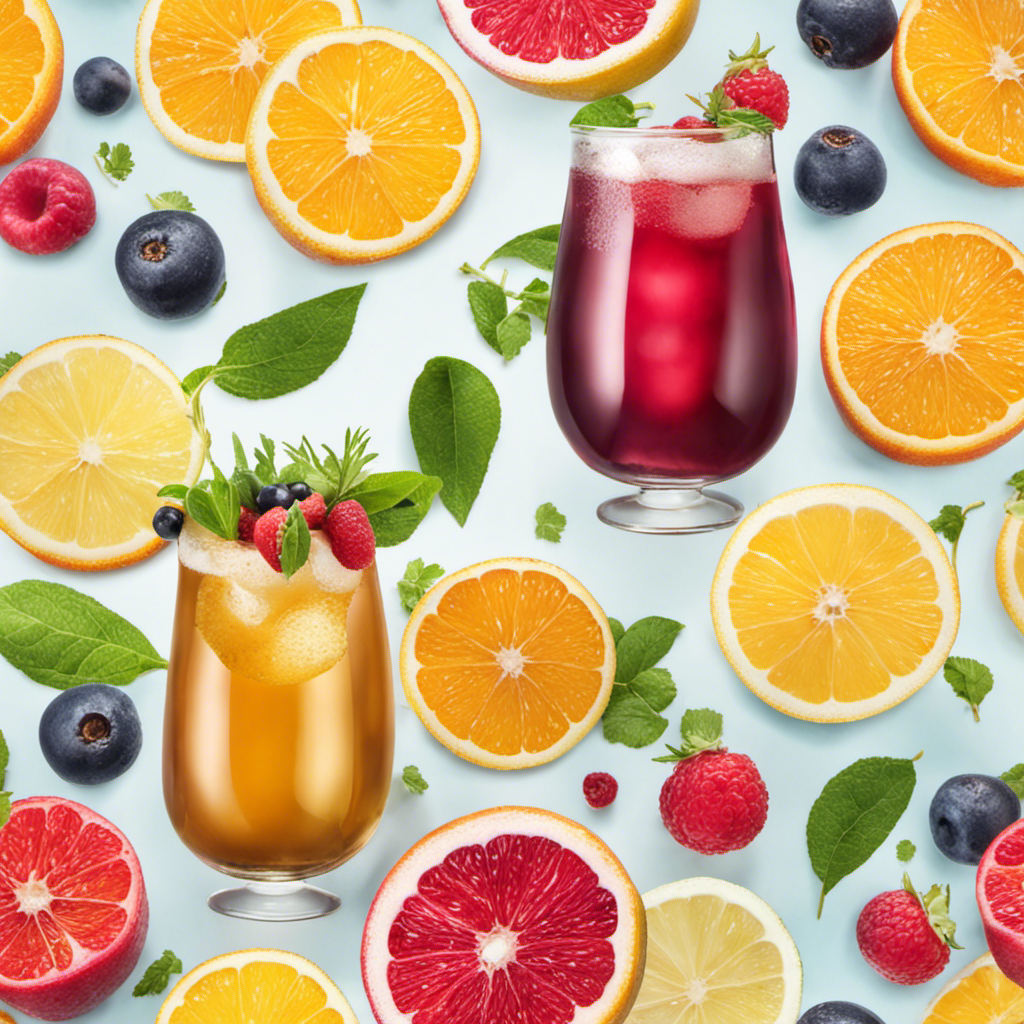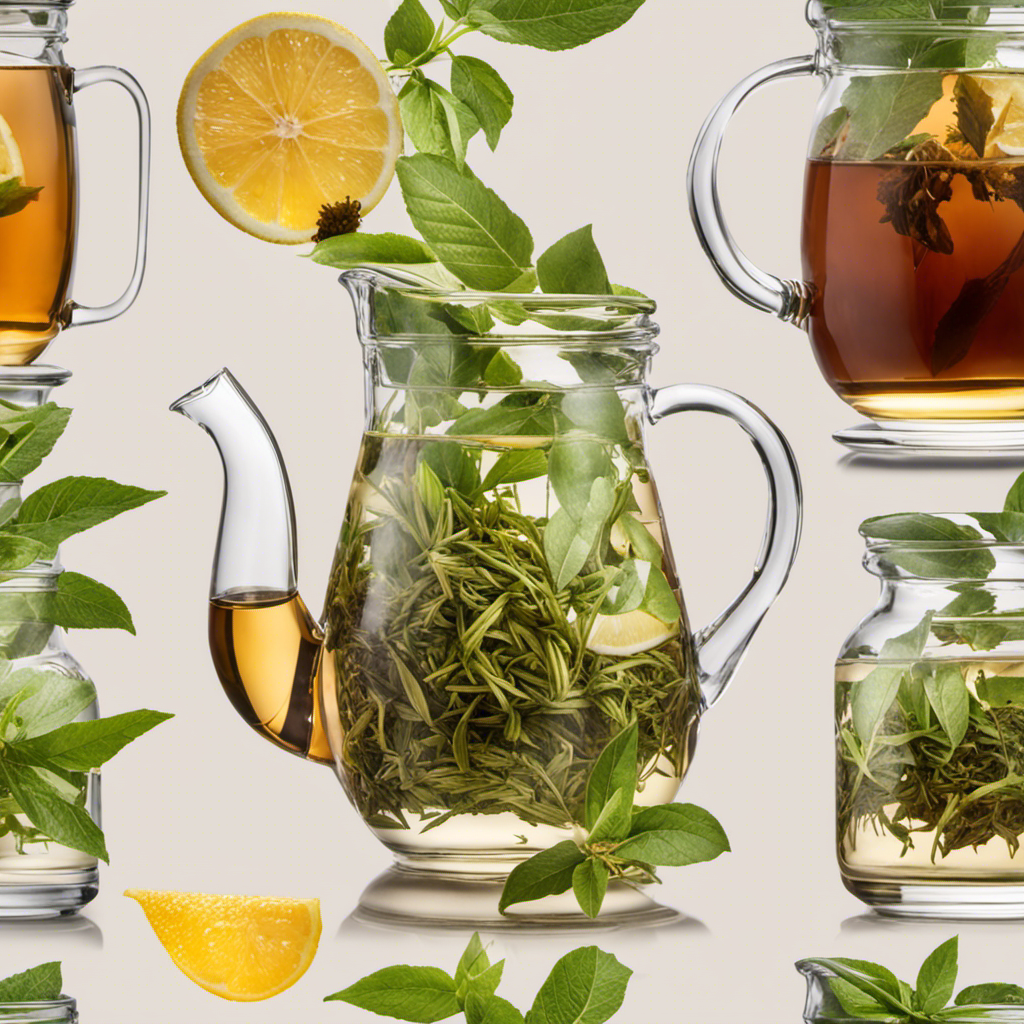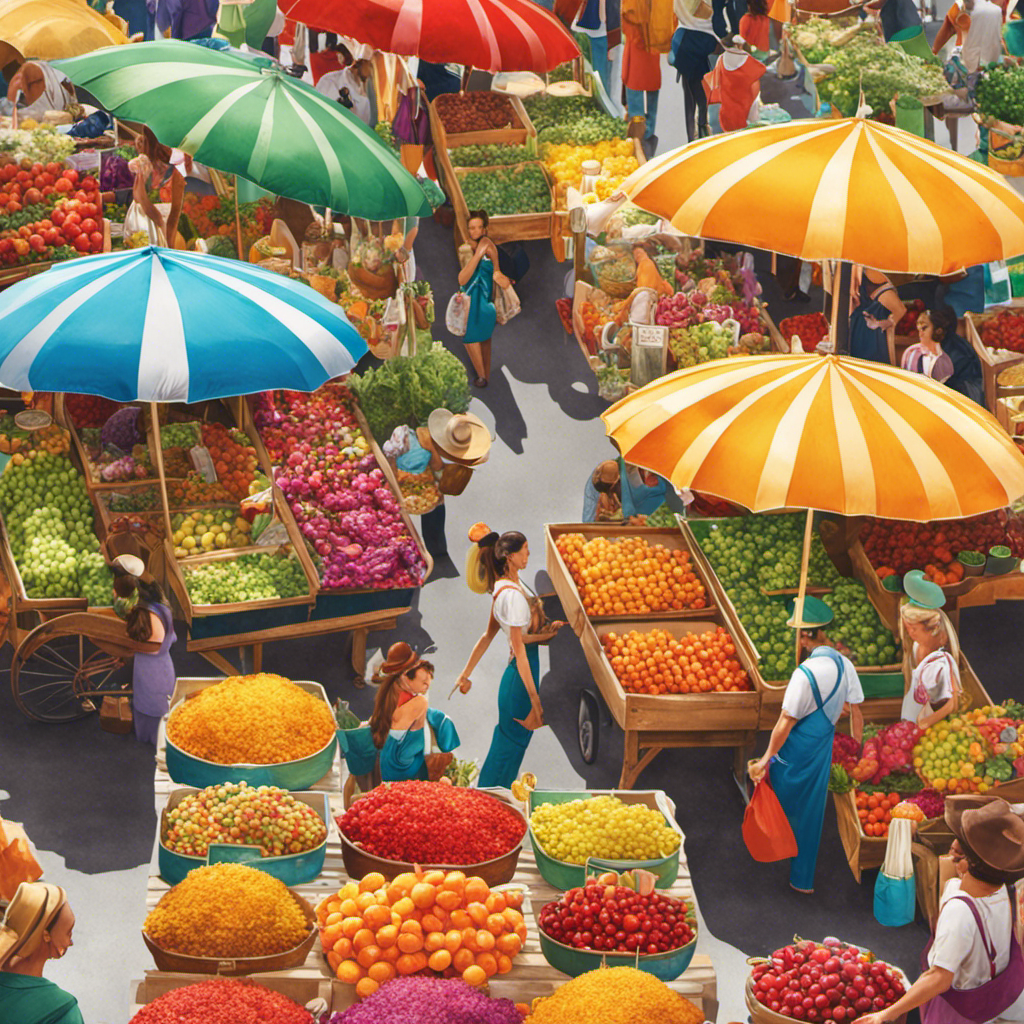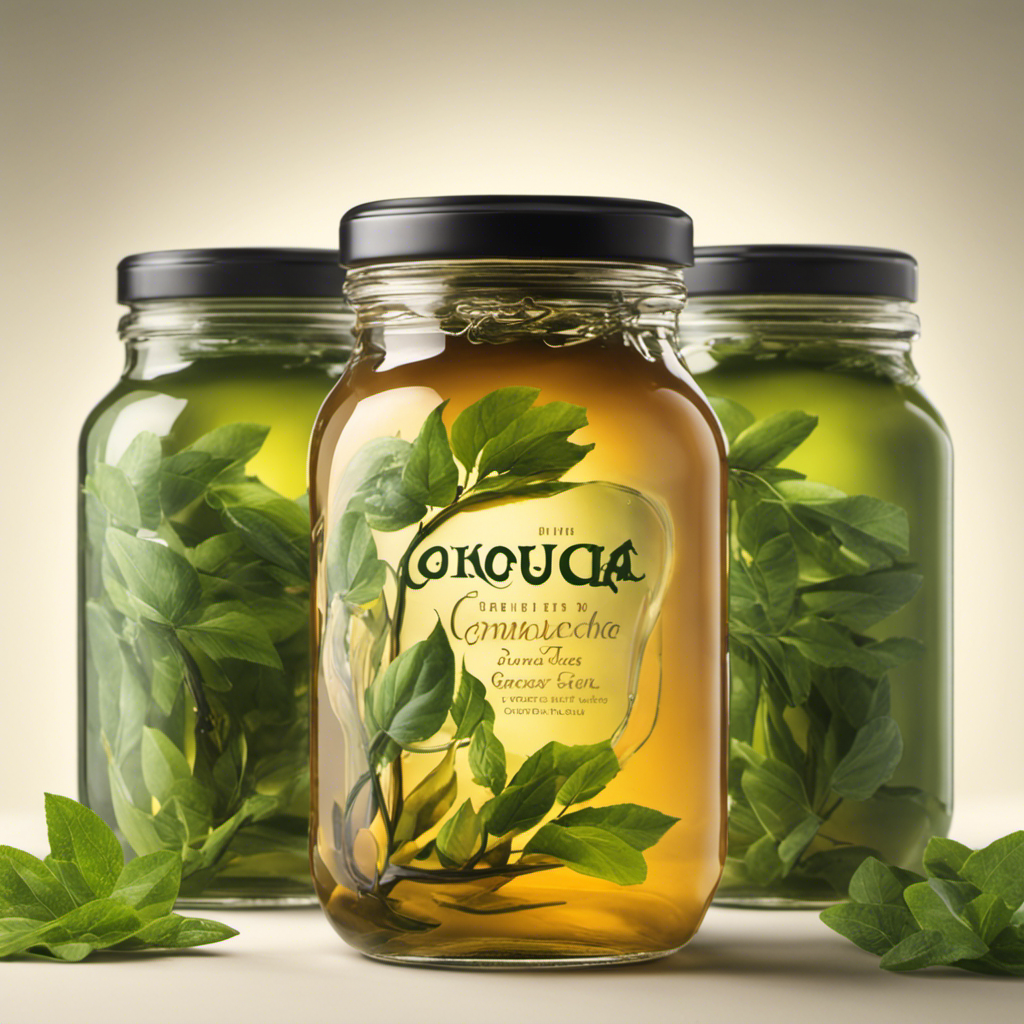Yerba Mate
How Much Is A Yerba Mate
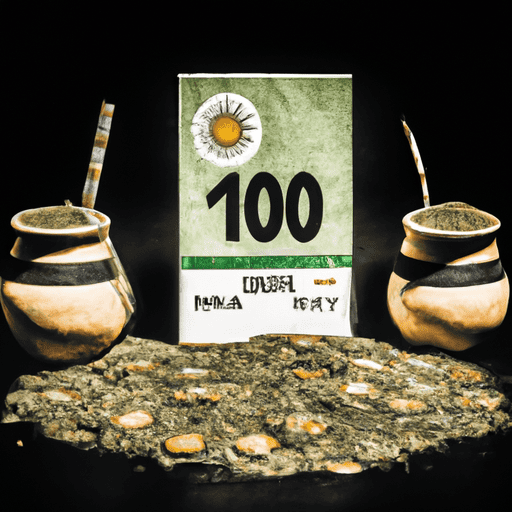
As the saying goes, ‘you are what you drink,’and for many South Americans, that means drinking yerba mate. Yerba mate is a traditional drink that originated in the Guarani culture of Paraguay and has since spread throughout South America, becoming a staple beverage in countries like Argentina, Uruguay, and Brazil. It’s not just a drink but an integral part of these cultures’ social fabric, where it’s often shared among friends or family.
But if you’re new to yerba mate or looking to stock up on more supplies, one question may be looming over your head: how much does it cost? The answer isn’t as straightforward as you might think. Factors such as brand name, quality of leaves and stems used in production, packaging size and design can all influence the price tag.
In this article, we’ll explore the different factors that affect the cost of yerba mate and provide guidance on where to purchase it at various price points.
Key Takeaways
- The cost of yerba mate is influenced by factors such as brand name, quality, packaging, and seasonal availability.
- Organic yerba mate tends to be more expensive due to extra care taken during cultivation and production, with prices ranging around $15 for a 1-pound bag.
- Popular brands of yerba mate include Cruz de Malta, Taragui, and Rosamonte, each known for their unique flavors and characteristics.
- Yerba mate can be consumed hot or cold, traditionally drunk out of a gourd with a metal straw called a bombilla, and accessories such as gourds and bombillas can enhance flavor and enjoyment of the drink.
What is Yerba Mate?
Yerba Mate is a popular South American drink that’s made from the leaves of the yerba mate plant. It has been consumed for centuries by indigenous people in countries such as Argentina, Brazil, Paraguay and Uruguay.
The cultural significance of Yerba Mate cannot be understated. It is commonly shared among friends and family during social gatherings or used as a form of hospitality when welcoming guests. The preparation process involves pouring hot water over the dried leaves and drinking through a metal straw called a bombilla which filters out any debris while sipping.
While Yerba Mate may hold different meanings to different cultures, one thing remains consistent; its popularity continues to grow worldwide. Factors that influence the price include quality of the product, packaging, distribution channels, and geographical location among others.
Factors that Influence the Price
The cost of this popular South American beverage can be influenced by a variety of factors. One major factor is the packaging options available for yerba mate. Yerba mate can come in loose leaf form, tea bags, or pre-packaged gourds with straws known as bombillas. The more elaborate the packaging option, the higher the price tends to be.
Another factor that influences the price of yerba mate is seasonal variations. Just like any other crop, yerba mate has its peak season where it’s harvested and readily available. During these times, prices tend to drop due to an abundance of supply. However, during off-seasons or periods when there are natural disasters or weather issues affecting production, prices may soar due to limited supply.
Overall, understanding these factors is important when determining how much you’ll pay for yerba mate. Packaging and seasonal availability can make a significant difference in price point depending on your preferences and budget. With that being said, let’s dive into typical prices of yerba mate and what you can expect to pay for this delicious drink!
Typical Prices of Yerba Mate
You may be surprised to know that the average price for a pound of loose leaf yerba mate in the United States is around $10, which can add up quickly if you drink it regularly. However, prices vary depending on factors like brand, quality and where you purchase it from. For instance, some online options sell yerba mate at a cheaper price compared to physical stores.
If you’re looking for organic options, expect to pay more than conventional ones since they are produced without synthetic pesticides or fertilizers. The extra cost is worth it as organic yerba mate has fewer chemicals and is better for your health and the environment. Keep in mind that not all brands carry organic options, so be sure to do your research before making a purchase.
To give you an idea of typical prices for yerba mate products in the market, here’s a table breaking down three popular brands along with their respective prices per pound:
| Brand | Regular Price | Organic Price |
|---|---|---|
| Cruz de Malta | $8-$10 | N/A |
| Playadito | $9-$11 | N/A |
| Rosamonte | $9-$12 | $13-$15 |
As you can see from the table above, Rosamonte offers both regular and organic options while Cruz de Malta and Playadito only carry regular ones. It’s important to note that these prices are subject to change depending on where you buy them from.
Moving onto the next section about popular yerba mate brands…
Popular Yerba Mate Brands
I’ve tried a few different brands of yerba mate and have found that some are better than others.
In this discussion, I’ll be giving an overview of some popular brands and what makes them stand out.
Additionally, I’ll provide information on the average prices for these brands so you can make an informed decision when looking to purchase yerba mate.
Overview of Popular Brands
Looking for a quick rundown on some of the most popular brands of yerba mate? Check out this overview!
When it comes to yerba mate, there are plenty of options to choose from. Each brand has its own unique flavor and brewing techniques that make it stand out from the rest. Some popular brands include Cruz de Malta, Taragui, and Rosamonte.
Cruz de Malta is known for its smooth taste and strong aroma. This brand uses only the highest quality yerba mate leaves and stems in their blends.
Taragui offers a variety of unique flavors such as orange, grapefruit, and mint. Their blends are perfect for those who want a little extra kick in their yerba mate experience.
Finally, Rosamonte is a great choice for those who enjoy bold flavors. This brand uses only aged yerba mate leaves which results in a richer, more complex taste.
These are just a few examples of the many popular brands available on the market today.
Now let’s talk about how much you can expect to pay for these popular brands…
Average Prices of Popular Brands
Get ready to discover the average prices of some of the most popular yerba mate brands on the market today.
When it comes to yerba mate, there are two main categories: organic and non-organic. Organic yerba mate tends to be more expensive due to the extra care taken during cultivation and production. On average, you can expect to pay around $15 for a 1-pound bag of organic yerba mate from brands like Guayaki or ECOTEAS.
If you’re looking to save some money, buying in bulk is a great option. Generally, purchasing a larger quantity of yerba mate will bring down the price per pound. For example, purchasing a 5-pound bag of traditional non-organic Cruz de Malta can cost as little as $2 per pound, compared to $10 per pound for smaller individual packs. Keep in mind that buying in bulk may require more storage space and a longer shelf life, so plan accordingly.
Looking for where to buy yerba mate? Check out our next section for tips on finding your perfect cup!
Where to Buy Yerba Mate
You can easily snag yerba mate at a variety of stores, from mainstream supermarkets to specialty shops that cater to tea enthusiasts. The best places to purchase yerba mate are health food stores, Latin American markets, and online retailers.
Health food stores often have a wide range of options for organic and fair trade yerba mate, while Latin American markets may carry more authentic brands. Online retailers like Amazon also offer a plethora of choices, including bulk options.
When choosing the right type of yerba mate, consider your personal preferences and needs. Some types may be blended with other herbs or flavors, while others are pure leaf. It’s also important to pay attention to the caffeine content if you’re sensitive to it.
Yerba mate can be consumed hot or cold and is traditionally drunk out of a gourd with a metal straw called a bombilla. To fully enjoy your yerba mate experience, you may want to invest in some accessories such as a gourd or bombilla.
These items can be found at many of the same locations where you purchased your yerba mate or online retailers specializing in traditional South American drinkware. By having the proper tools on hand, you’ll be able to make the most out of your daily dose of this energizing beverage.
Yerba Mate Accessories
To fully immerse yourself in the cultural experience of drinking yerba mate, invest in traditional South American drinkware such as a gourd and bombilla. These accessories can enhance the flavor and enjoyment of this energizing beverage.
Yerba mate gourds are typically made from dried calabash fruit or carved out of wood, while bombillas are metal straws with a filter at one end to prevent loose leaves from entering your mouth. These accessories not only add authenticity to your yerba mate experience but also provide practical benefits.
Using a yerba mate gourd allows for better temperature control and helps to release more flavor from the leaves. To prepare the gourd for use, it must be cured by filling it with yerba mate and hot water and allowing it to sit overnight. This process helps to create a protective film on the inside of the gourd that prevents bitterness from seeping into subsequent brews.
When using a bombilla, it’s important to position it properly so that the filter end is at the bottom of the gourd where most of the leaves rest.
Brewing techniques vary depending on personal preference, but generally involve filling the gourd about two-thirds full with yerba mate leaves, adding hot water (not boiling), and sipping through the bombilla until all liquid has been consumed before refilling. Some people prefer to add sweeteners like honey or sugar while others enjoy their yerba mate plain.
Regardless of how you choose to enjoy your yerba mate, using traditional South American drinkware will enhance your experience and allow you to connect more deeply with this beloved beverage. To learn how to prepare yerba mate using these accessories, continue reading about brewing techniques in our next section.
How to Prepare Yerba Mate
Preparing yerba mate is easy and won’t take long, so you can quickly enjoy a delicious and energizing cup of this beloved South American beverage. To start, fill your gourd (a traditional container for yerba mate) about 2/3 full with loose yerba mate leaves. Then, tilt the gourd slightly and pour cool water into it until the water reaches the top of the leaves.
Next, insert your bombilla (a metal straw with a filter on one end) into the gourd, ensuring that the filter end is at the bottom of the gourd where it touches the leaves. Slowly pour hot water (not boiling!) over the leaves until it almost reaches the top of your gourd. Let steep for a few minutes to allow flavors to meld together.
Sip through your bombilla and enjoy! Yerba mate is best shared amongst friends or family as it’s often considered a social activity in South America – just pass around your gourd and let everyone have a taste. With its rich history dating back centuries ago from indigenous tribes in South America, preparing yerba mate has remained an important ritual enjoyed by many today.
Now that you know how to prepare yerba mate, let’s talk about some health benefits associated with drinking it. Yerba mate is known for being high in antioxidants and providing caffeine without causing jitters or crashes like coffee can sometimes do. It also contains vitamins such as vitamin C and B-complex vitamins which help support energy levels throughout the day. Stay tuned to learn more about how incorporating yerba mate into your daily routine could benefit you!
Health Benefits of Yerba Mate
With its high antioxidant content and caffeine that won’t leave you jittery, yerba mate is a popular choice for those looking to boost their energy levels naturally. Compared to coffee, yerba mate provides a smoother energy boost without the crash commonly associated with coffee. Additionally, yerba mate contains theobromine, which promotes mental clarity and alertness without causing anxiety.
Here are five health benefits of consuming yerba mate:
- Boosts immune system
- Reduces inflammation
- Improves digestion
- Enhances physical endurance
- Lowers risk of heart disease
Many people find that drinking yerba mate helps them concentrate better and improves their memory retention. Unlike coffee, which can sometimes cause jitters or nervousness, yerba mate provides a more balanced sense of well-being. Whether you’re studying for an exam or trying to finish a work project on time, incorporating yerba mate into your routine can help increase productivity and focus.
Transitioning into the subsequent section about ‘yerba mate in popular culture,’ it’s worth noting that this South American beverage has been enjoyed for centuries by indigenous peoples before becoming popularized around the world. From its cultural significance in Argentina to its growing fanbase in North America and Europe, it’s clear that people are increasingly recognizing the health benefits and delicious taste of yerba mate.
Yerba Mate in Popular Culture
After learning about the many health benefits of yerba mate, it’s interesting to see how this Argentine tea has made its way into popular culture. Yerba mate has become a staple drink in many parts of South America, and it’s now gaining popularity worldwide.
From music to sports, yerba mate is everywhere. In pop culture, you can find references to yerba mate in movies, TV shows, and even video games. It’s not uncommon to see a character drinking yerba mate on screen or hear someone mention the tea in dialogue. In recent years, musicians have also started incorporating yerba mate into their lyrics and album artwork.
Athletes are also getting in on the action by using yerba mate as a natural energy booster before games or workouts. Many athletes swear by this tea because it contains caffeine and other plant compounds that can help improve focus and endurance. Yerba mate is becoming an increasingly popular alternative to traditional sports drinks that often contain artificial ingredients.
Overall, it’s clear that yerba mate has made its mark on pop culture and sports alike. As more people discover the benefits of this tea, we can expect to see even more creative uses for it in the future. Whether you’re a fan of movies or sports, there’s no denying that yerba mate is an important part of today’s cultural landscape.
Frequently Asked Questions
How does the taste of Yerba Mate differ from other types of tea or coffee?
When it comes to comparing the taste of yerba mate with other types of tea or coffee, there are some noticeable differences. While tea and coffee tend to have distinct flavor notes that can vary depending on the type and brewing method, yerba mate has a more subtle taste profile.
It’s earthy and slightly bitter, with a hint of sweetness that’s often described as ‘grassy’ or ‘herbal.’ The flavor is also affected by the way it’s prepared whether it’s steeped in hot water like traditional tea or brewed using a gourd and bombilla.
Overall, I find that yerba mate has a unique taste that sets it apart from other popular hot beverages.
What is the caffeine content of Yerba Mate compared to other beverages?
When it comes to caffeine comparison, yerba mate is known for having a high caffeine content compared to other beverages like tea and coffee. In fact, the caffeine in yerba mate is often described as providing a more balanced energy boost without the jittery effects that can come with drinking too much coffee.
Additionally, yerba mate contains other beneficial compounds like antioxidants and vitamins that have been linked to improved focus, digestion, and overall health. While the taste of yerba mate may differ from other types of tea or coffee, its potential health benefits and unique caffeine profile make it an increasingly popular choice among those looking for a natural energy boost.
Are there any potential side effects or risks associated with drinking Yerba Mate?
As someone who’s tried yerba mate, it’s important to note that there are potential risks and health concerns associated with drinking this beverage. Yerba mate contains caffeine, which can cause jitteriness, anxiety, and insomnia in some people.
In addition, studies have shown that excessive consumption of yerba mate may increase the risk of certain cancers, including esophageal cancer. Other potential side effects include heart palpitations and high blood pressure.
While yerba mate can be a tasty alternative to coffee or tea, it’s important to consume it in moderation and be aware of any potential risks or health concerns.
How does the process of harvesting and processing Yerba Mate impact its quality and price?
When it comes to yerba mate, the process of harvesting and processing has a significant impact on its quality and price. Harvesting techniques vary depending on the region where the yerba mate is grown. Some farmers hand-pick each leaf while others use machines to do the job.
However, sustainable practices are becoming increasingly important in the industry, as consumers demand products that are environmentally friendly and socially responsible. The way that yerba mate is processed also affects its quality and price. Some producers use traditional methods that involve drying the leaves over an open flame, while others opt for more modern techniques like hot air drying or freeze-drying.
Ultimately, factors such as harvesting techniques and sustainability practices can influence the quality of yerba mate and its overall cost to consumers.
What is the cultural significance of Yerba Mate in South American countries where it is traditionally consumed?
As someone who’s lived in South America for several years, I can attest to the cultural significance of yerba mate in this part of the world.
In many countries, particularly Argentina, Uruguay, and Paraguay, it’s a deeply ingrained part of daily life and ritual practices.
Sharing a mate with friends or family is seen as a way to connect and socialize, while also providing energy and focus throughout the day.
The act of preparing and sharing the drink is steeped in tradition and respect for others – from carefully selecting the right type of yerba to using specific utensils to heat up water to just the right temperature.
Yerba mate plays an important role not only in physical wellness but also in emotional wellbeing by fostering strong connections between individuals within their communities.
Conclusion
So, that’s how much a yerba mate costs! As someone who’s been enjoying this drink for years, I can confidently say that it’s worth every penny.
Yerba mate offers a unique taste and energy boost that sets it apart from other beverages. But the price of yerba mate isn’t just about the money – it’s also about the experience.
Drinking yerba mate is like taking a journey to South America without leaving your home. The rich cultural history and health benefits associated with this drink make each cup feel like a special occasion.
So, whether you’re a seasoned yerba mate drinker or new to the world of this herbal tea, I encourage you to give it a try. With so many options for where to buy and how to prepare it, there’s no reason not to explore all that yerba mate has to offer.
Who knows – maybe you’ll even find yourself becoming a ‘yerbero’ (a devoted fan of yerba mate) in no time!
Arf, an author and an innovative enthusiast of coffee, coffee alternatives, and tea, plays a crucial role as a contributor to the esteemed Cappuccino Oracle platform. Renowned for his curiosity and passion for these captivating beverages, Arf has carved out a unique space for himself in the world of exploration and writing. He realized that coffee, coffee alternatives, and tea are not mere drinks to keep one awake, but universes of flavors and stories waiting to be explored.
Arf’s articles for Cappuccino Oracle blend meticulous research with personal experiences, providing readers with an in-depth understanding of various types of coffee, coffee alternatives, and tea, along with their unique characteristics, cultures, and histories. His honest reviews and engaging narratives guide readers on their own journeys, helping them discover their preferences and find their perfect brew.
Yerba Mate
What Plant Does Yerba Mate Come From

Yerba mate is derived from the Ilex paraguariensis plant, which occupies an esteemed position in the realms of both botany and cultural practices. Admired for its shiny green foliage, diminutive white blossoms, and crimson berries, it is truly a visual delight. Indigenous to the subtropical areas of Argentina, Brazil, and Paraguay, this plant flourishes under the canopy of towering trees, contributing to a balanced and varied ecosystem.
But yerba mate is more than just a plant; it is deeply woven into the fabric of South American culture. For centuries, indigenous communities have cherished this plant, using it in rituals, ceremonies, and medicinal practices. Its leaves are carefully harvested, dried, and then steeped in hot water to create a beverage that is both invigorating and nourishing.
Join me on a journey to discover the botanical wonders, cultural significance, and health benefits of yerba mate. Together, we will explore its origins, cultivation methods, and the global demand that has made it a beloved drink around the world.
Key Takeaways
- Yerba Mate comes from the plant called Ilex paraguariensis.
- Yerba Mate is an evergreen tree with glossy, serrated leaves and small white flowers.
- Yerba Mate is native to South America, specifically Argentina, Brazil, and Paraguay.
- Yerba Mate has significant cultural, ecological, and medicinal importance.
Introduction to Yerba Mate
So, you’re curious about yerba mate? Let me introduce you to this amazing South American beverage! Yerba mate, scientifically known as Ilex paraguariensis, is a species of holly native to the subtropical regions of South America. This evergreen plant grows as a small tree or shrub, reaching heights of up to 15 meters. Its leaves are dark green, glossy, and have a serrated edge. Yerba mate belongs to the family Aquifoliaceae and is closely related to other holly species.
Yerba mate holds significant cultural importance in South America, particularly in countries like Argentina, Uruguay, and Paraguay. Traditionally, yerba mate is prepared by steeping the dried leaves and stems in hot water, often in a hollowed-out gourd called a mate. This beverage is often shared among friends and family, symbolizing unity and hospitality. Yerba mate is not only a social drink but also has various health benefits and is believed to improve focus and energy levels.
Now, let’s delve into the botanical name of the yerba mate plant.
The Botanical Name of the Yerba Mate Plant
To identify the botanical name of the plant where yerba mate originates, you must delve into the captivating world of herbal taxonomy. As a botanist, I can provide accurate and precise information about the specific plant species from which yerba mate originates. The botanical classification of yerba mate is as follows:
| Kingdom | Plantae |
|---|---|
| Division | Magnoliophyta |
| Class | Magnoliopsida |
| Order | Aquifoliales |
| Family | Aquifoliaceae |
| Genus | Ilex |
| Species | Ilex paraguariensis |
Yerba mate, scientifically known as Ilex paraguariensis, is a small evergreen tree with green leaves and red berries. It is native to subtropical regions of South America, primarily in Paraguay, Argentina, and Brazil. This plant thrives in areas with high humidity and ample rainfall. It grows in the understory of the forest, often forming dense thickets. Yerba mate has cultural significance among indigenous communities, where it is used in traditional rituals, ceremonies, and medicinal practices. Transitioning to the next section, let’s explore the native range and habitat of the yerba mate plant.
Native Range and Habitat of the Yerba Mate Plant
The yerba mate plant is primarily found in the subtropical regions of South America, including Paraguay, Argentina, and Brazil. It thrives in areas with high humidity, rainfall, and temperatures between 20 to 30 degrees Celsius. The plant is commonly found in dense forests, along riverbanks, and in shaded areas. It prefers well-drained soil and can tolerate both acidic and alkaline conditions.
Yerba mate is well adapted to its native habitat and plays a crucial ecological role by providing food and shelter for various species. Understanding the environmental conditions in which the yerba mate plant thrives is essential for its conservation and cultivation.
Now let’s delve into a detailed description of the yerba mate plant.
Description of the Yerba Mate Plant
The yerba mate plant is a botanical wonder that captivates the eye with its vibrant green leaves and delicate white flowers. It belongs to the species Ilex paraguariensis and is native to the subtropical regions of South America, particularly Argentina, Paraguay, and Brazil.
This evergreen plant can reach heights of up to 20 meters and has a dense, bushy growth habit. The leaves are ovate and serrated, while the flowers are small and inconspicuous. The yerba mate plant is known for its ability to thrive in shade, making it an ideal crop for forested areas.
Cultivation involves carefully selecting and preparing the seeds, which are then planted in shaded nurseries. Once matured, the leaves are harvested, dried, and processed to create the beloved yerba mate beverage.
Understanding the cultivation and harvesting of yerba mate is crucial for appreciating its journey from plant to drink.
Cultivation and Harvesting of Yerba Mate
Cultivating and harvesting yerba mate involves a meticulous process that transforms the vibrant green leaves into the beloved beverage enjoyed by many.
Yerba mate, scientifically known as Ilex paraguariensis, is a species of holly native to South America. This evergreen plant can reach heights of up to 15 meters and has oval-shaped leaves with serrated edges. Yerba mate grows in dense clusters and produces small white flowers, which eventually develop into red berries. The plant thrives in subtropical regions with well-drained soil and requires a combination of shade and sunlight for optimal growth.
Cultivation techniques include pruning, fertilizing, and controlling pests to maintain healthy plants. Yerba mate is harvested by carefully hand-picking the leaves and stems, ensuring that only the highest quality parts are selected. These leaves are then dried and aged to enhance the flavor and aroma.
Now that we understand the cultivation and harvesting process of yerba mate, let’s explore its traditional uses in South American culture.
Traditional Uses of Yerba Mate in South American Culture
Despite its widespread popularity, many people may not be aware of the traditional uses of yerba mate in South American culture.
Yerba mate, scientifically known as Ilex paraguariensis, is a plant species that belongs to the holly family. It is an evergreen tree with a dense crown, glossy leaves, and small white flowers that bloom in the spring. Yerba mate is indigenous to South America, primarily found in countries such as Argentina, Paraguay, and Brazil.
In South American culture, yerba mate is deeply ingrained and plays a significant role in traditional rituals and ceremonies. It is commonly used in mate ceremonies, where people gather to share the drink and pass around a hollowed-out gourd and a bombilla, a metal straw. These ceremonies have a social and communal aspect, bringing people together to enjoy yerba mate and foster connections.
Understanding the cultural significance of yerba mate enhances our appreciation of its rich history and traditions.
Moving forward, let’s explore the health benefits of yerba mate.
Health Benefits of Yerba Mate
Let’s delve into the numerous health benefits that come with enjoying yerba mate.
Yerba mate, derived from the plant species Ilex paraguariensis, is a natural energy booster that provides a stimulating effect without the jitters often associated with coffee. This powerful herb contains a combination of caffeine, theobromine, and theophylline, which work synergistically to promote alertness and mental focus.
Moreover, yerba mate has been found to aid in weight management by increasing metabolism, reducing appetite, and enhancing fat oxidation.
The plant’s unique blend of bioactive compounds, such as polyphenols and saponins, contribute to its antioxidant and anti-inflammatory properties, which support overall health and well-being.
Additionally, yerba mate has a long-standing cultural significance, with indigenous communities using it for centuries in rituals, medicinal practices, and social contexts.
Now, let’s explore the various yerba mate preparation and consumption methods.
Yerba Mate Preparation and Consumption Methods
Yerba mate can be enjoyed through various preparation and consumption methods, adding versatility to the experience. Here are three popular methods of brewing yerba mate:
-
Traditional Gourd and Bombilla: This method involves using a hollowed-out gourd and a metal straw called a bombilla. The yerba mate leaves are placed in the gourd, hot water is poured over them, and the drink is sipped through the bombilla.
-
French Press: This method is a convenient alternative for those who don’t have a traditional gourd. Simply add yerba mate to a French press, pour hot water over it, let it steep for a few minutes, and press down the plunger to separate the liquid from the leaves.
-
Tea Bags: Yerba mate is also available in tea bag form, making it quick and easy to brew. Simply place the tea bag in a cup, pour hot water over it, and let it steep for a few minutes.
These brewing methods reflect the cultural significance of yerba mate and its traditional ceremonies. Transitioning to the subsequent section, commercial production and global demand for yerba mate continues to grow.
Commercial Production and Global Demand for Yerba Mate
In the previous section, I discussed different ways to prepare and consume yerba mate. Now, let’s delve into the commercial production and global demand for this popular beverage. As a botanist, it’s important to understand the plant from which yerba mate originates. The scientific name of the yerba mate plant is Ilex paraguariensis. This evergreen tree belongs to the Aquifoliaceae family and is native to South America, specifically the Atlantic Forest biome. Yerba mate has a unique appearance with glossy, serrated leaves and small white flowers. It grows best in subtropical and temperate regions, with a preference for well-drained soils. The plant’s ecological niche is vital for the survival of many animal species. Culturally, yerba mate holds significant importance in indigenous communities, where it has been used for centuries in rituals, ceremonies, and medicinal practices. Now, let’s explore the challenges of commercialization and the rapid growth of the yerba mate market.
|—|—|—|—|—|
|Botanical Characteristics|Commercialization Challenges|Cultural Significance|Ecological Niche|Yerba Mate Market Growth|
|Scientific Name: Ilex paraguariensis|Meeting global demand without compromising ecological integrity|Used in rituals, ceremonies, and medicinal practices|Provides habitat and food for various animal species|Expanding consumer base and increasing popularity|
|Physical Appearance: Glossy, serrated leaves|Ensuring sustainable cultivation practices|Historical and present-day roles in indigenous communities|Rapid deforestation threatens the plant’s habitat|Growing demand for yerba mate products|
|Growth Habits: Evergreen tree|Balancing commercial interests with conservation efforts|Folklore and beliefs associated with the plant|Contributes to the biodiversity and stability of ecosystems|Emerging markets and international trade|
|Reproductive Features: Small white flowers|Preserving traditional harvesting methods|Social contexts and communal sharing|Supports livelihoods of local communities|Innovations in product development and marketing|
Now, let’s transition to the subsequent section about sustainability and conservation efforts for yerba mate plantations.
Sustainability and Conservation Efforts for Yerba Mate Plantations
Sustainability and conservation efforts are crucial for ensuring the long-term viability of yerba mate plantations. As a botanist, I can provide accurate and precise information about the specific plant species from which yerba mate originates.
Yerba mate, scientifically known as Ilex paraguariensis, is a small evergreen tree that belongs to the holly family. It has a dense crown, reaching a height of about 15 meters. The leaves are dark green, shiny, and serrated, while the flowers are small and white.
Yerba mate is native to South America, particularly in countries like Argentina, Brazil, and Paraguay. In terms of its ecological niche, yerba mate thrives in subtropical forests with high humidity levels.
Culturally, yerba mate holds great significance for indigenous communities. It has been used for centuries in rituals, ceremonies, and medicinal practices. Today, it continues to be an important social beverage, symbolizing hospitality and connection.
To ensure the sustainability of yerba mate plantations, sustainable farming practices and biodiversity conservation efforts are essential.
Frequently Asked Questions
What are the different varieties of yerba mate available?
The most popular varieties of yerba mate include traditional, flavored, and aged. Each variety offers unique characteristics, such as bold flavors, subtle sweetness, or smoky notes. Exploring these flavors is a delightful journey for yerba mate enthusiasts.
How does the taste of yerba mate compare to other types of tea?
Yerba mate has a unique taste that sets it apart from other teas. Compared to green tea, it has a more robust and earthy flavor, while black tea is stronger and more bitter.
Are there any side effects or potential risks associated with consuming yerba mate?
There may be potential risks associated with consuming yerba mate, but it also offers several health benefits. It’s important to consider both sides and make informed choices when incorporating this beverage into your routine.
Can yerba mate be used as a natural remedy for certain health conditions?
Yerba mate has been traditionally used as a natural remedy for various health conditions. It is believed to provide numerous health benefits, such as boosting energy, aiding digestion, and improving mental focus.
Are there any traditional rituals or customs associated with yerba mate consumption?
Yerba mate consumption is deeply rooted in traditional rituals and customs. It holds significant cultural importance, being used in indigenous ceremonies and social gatherings. Its historical and present-day roles make it a symbol of community and connection.
Conclusion
Yerba mate, known scientifically as Ilex paraguariensis, originates from a remarkable plant. It has glossy, evergreen leaves and small white flowers, giving it a unique appearance. This plant thrives in the native range of South America, where indigenous communities have cherished its cultural significance for centuries. Yerba mate holds a special place in their hearts and minds, being used in traditional rituals and medicinal practices. The global demand for yerba mate is increasing, but it is crucial that we prioritize sustainability and conservation efforts to ensure its future prosperity.
Justin is a seasoned author, coffee and tea enthusiast, and an essential member of the Cappuccino Oracle team. With a keen appreciation for the complexities of coffee, coffee alternatives, and tea, Justin has dedicated his professional career to exploring these realms and sharing his insights with readers worldwide.
Justin’s immersion in the world of coffee, coffee alternatives, and tea began at a young age, kindling a passion that extended beyond mere consumption. This love for these beverages led him to combine his talent for writing with his devotion to coffee and tea, bringing him to Cappuccino Oracle as a dedicated author.
Yerba Mate
Where Is La Yerba Mate? From
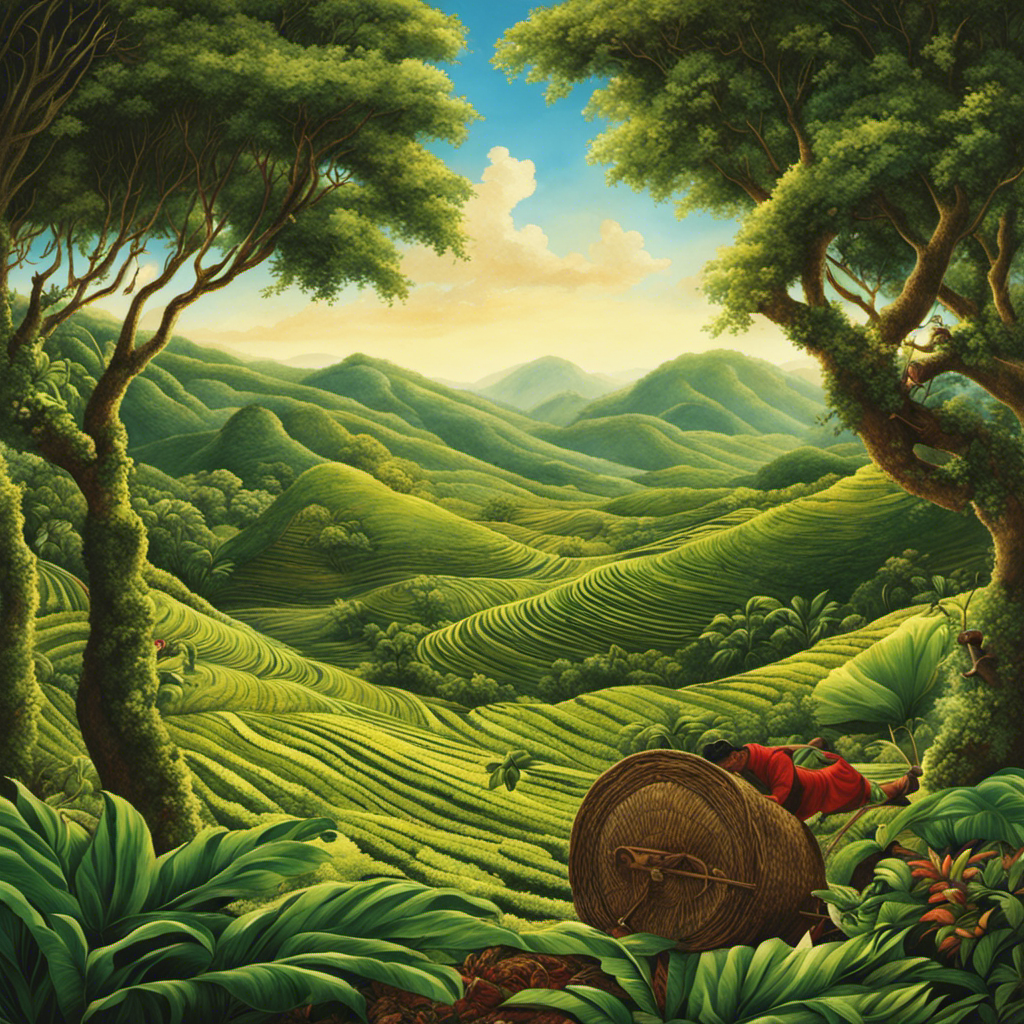
In this piece, we’re going to explore the roots of this cherished drink, delve into how it’s made, and uncover the different types and tastes that exist. Additionally, we’ll examine the conventional ways it’s prepared and reveal the health advantages linked to yerba mate.
But it doesn’t stop there – we’ll take a virtual journey around the world to see how different cultures embrace this drink. From its sustainability practices to mouthwatering recipes and pairings, we’ll leave no leaf unturned.
So grab your gourd and bombilla, and let’s embark on a flavorful adventure to uncover the answer to the question: where is la yerba mate from?
Key Takeaways
- Yerba Mate originates from Argentina, Brazil, Paraguay, and Uruguay.
- It was discovered and cultivated by the indigenous Guarani people and is considered a sacred plant with medicinal properties.
- Yerba Mate is an integral part of South American culture and communal drinking rituals.
- The production process of Yerba Mate involves careful selection, hand-harvesting, drying, aging, and a meticulous production process passed down through generations.
The Origins of Yerba Mate
The origins of yerba mate have deep historical significance, as it is deeply rooted in the culture and traditions of South America.
This unique beverage has its origins in the lush rainforests of Argentina, Brazil, Paraguay, and Uruguay. Nestled among the vibrant landscapes and diverse ecosystems, the production of yerba mate has been a long-standing tradition for centuries.
The indigenous Guarani people were the first to discover and cultivate the leaves of the yerba mate tree, considering it a sacred plant with numerous medicinal properties.
Today, the yerba mate production process continues to be an integral part of South American culture, bringing people together through its rich flavors and communal drinking rituals.
Now, let’s delve into the fascinating journey of how yerba mate is produced.
Yerba Mate Production Process
First, you start by carefully selecting the finest leaves from the lush green plantations. Yerba mate cultivation is a delicate process that requires attention to detail and expertise. The plantations, nestled in the heart of South America, are a sight to behold. The vibrant green leaves sway gently in the breeze, creating a mesmerizing sight.
As you walk through the plantations, you can hear the rustling of leaves and the songs of birds in the distance. The air is filled with the earthy aroma of the leaves, creating a unique olfactory experience.
Yerba mate harvesting is done by hand, ensuring that only the best leaves are selected. As the leaves are carefully plucked, they are dried and aged to perfection. This meticulous process ensures that the final product is of the highest quality.
Moving on to yerba mate varieties and flavors, each one offers a unique taste and aroma that will transport you to the heart of South America.
Yerba Mate Varieties and Flavors
As you explore the world of yerba mate, a multitude of tantalizing flavors and enticing varieties await, ready to captivate your taste buds and transport you to the vibrant heart of South America.
Yerba mate comes in a range of flavor profiles, from earthy and bold to delicate and floral. Each variety offers a unique experience, reflecting the diverse landscapes and cultures of the regions where it is grown.
The brewing techniques also play a crucial role in enhancing the flavors. Whether you prefer a traditional gourd and bombilla or a modern infusion method, the brewing process allows you to extract the rich flavors and aromas of yerba mate.
From the moment the water hits the leaves, a delightful journey begins, taking you closer to the authentic taste of this beloved drink.
Now, let’s delve into the traditional yerba mate preparation and discover the rituals that have been passed down through generations.
Traditional Yerba Mate Preparation
To start preparing your traditional yerba mate, gather your gourd, bombilla, and hot water. This ritual connects you to the rich flavors and cultural heritage of this beloved beverage.
-
Choose your yerba mate: There are various types of yerba mate available, each with its own unique flavor profiles and strengths. Select one that suits your taste preferences and desired intensity.
-
Fill the gourd: Fill the gourd about two-thirds full with yerba mate leaves. Gently shake it to settle the leaves and create a slight slope.
-
Insert the bombilla: Place the bombilla, a metal straw with a filter at the bottom, into the gourd. Ensure it touches the bottom without stirring the leaves.
-
Pour hot water: Slowly pour hot water (not boiling) into the gourd. Allow the leaves to absorb the water and release their flavors.
As the water infuses with the leaves, the traditional yerba mate preparation captures the cultural significance of yerba mate, fostering a sense of community and connection.
From this invigorating start, let’s now explore the health benefits of yerba mate.
Health Benefits of Yerba Mate
Yerba mate isn’t just a delicious beverage; it offers a range of health benefits.
First, it’s packed with antioxidants that protect against cell damage and reduce the risk of chronic diseases.
Plus, yerba mate is known to boost energy and mental focus, making it a great natural pick-me-up.
Additionally, it aids in digestion and weight loss by stimulating the digestive system and increasing metabolism.
So why not sip on a cup of yerba mate and enjoy its many health benefits?
Antioxidant properties
You can find the antioxidant properties of la yerba mate in various scientific studies. This traditional South American drink is packed with beneficial antioxidants that can improve your overall health. Here are some key benefits of antioxidants found in yerba mate:
- They help protect your cells from damage caused by free radicals.
- They can reduce inflammation in the body, which is linked to chronic diseases.
- They may improve heart health by lowering cholesterol levels.
- They have been shown to boost the immune system and protect against infections.
- They can potentially prevent certain types of cancer.
With its rich history and vibrant culture, la yerba mate is not only a healthy beverage but also an integral part of South American traditions. The aroma of freshly brewed mate fills the air, while the bustling streets are adorned with colorful vendors selling this beloved drink. The sound of laughter and conversation can be heard as locals gather in parks, sharing a gourd of mate among friends. The taste of yerba mate is unique, with a bitter and earthy flavor that is both refreshing and invigorating. As you sip on this energizing drink, you can feel a sense of vitality and mental clarity wash over you, preparing you for the adventures that lie ahead.
Transitioning into the next subtopic, drinking yerba mate is not only beneficial for its antioxidant properties but also for its ability to boost energy and mental focus.
Boosting energy and mental focus
Immerse yourself in a world of vibrant energy and sharpened focus as you indulge in the invigorating properties of this traditional South American drink.
Originating from the lush regions of Argentina, Brazil, and Paraguay, la yerba mate has long been cherished by the locals for its ability to boost productivity and improve cognitive function.
As I sipped on my mate in a bustling café in Buenos Aires, I couldn’t help but feel a surge of energy coursing through my veins. The rich, earthy aroma filled the air, mingling with the lively chatter of locals and the clinking of mate gourds. It was as if the drink itself had the power to awaken the senses and ignite the mind.
But the benefits of la yerba mate extend beyond the initial burst of energy. Stay tuned as we explore its role in aiding digestion and weight loss.
Aiding digestion and weight loss
Originating from South America, this traditional drink not only boosts energy and mental focus but also aids in digestion and promotes weight loss.
When it comes to digestive benefits, yerba mate acts as a natural diuretic, helping to eliminate toxins from the body and improve overall digestion. Its high fiber content also supports a healthy digestive system by regulating bowel movements and preventing constipation.
Additionally, yerba mate has been found to boost metabolism and promote weight loss. Its thermogenic properties increase the body’s calorie-burning abilities, making it an effective aid for those looking to manage their weight.
With its refreshing taste and numerous health benefits, yerba mate is truly a drink for the body and mind.
Transitioning into the next section, yerba mate’s popularity extends far beyond its health benefits.
Yerba Mate in Popular Culture
In popular culture, yerba mate has become a trendy beverage choice among health-conscious individuals. This herbal tea has also made appearances in films and music, further solidifying its presence in popular culture.
In movies, yerba mate often symbolizes a sense of connection to nature and a laid-back lifestyle. It is often depicted being shared among friends or enjoyed during outdoor activities.
In music, yerba mate is sometimes mentioned in lyrics, highlighting its cultural significance in certain regions. Its distinct flavor and energizing properties have also caught the attention of musicians who seek a natural boost while on tour.
Yerba mate’s presence in popular culture reflects its growing popularity and the recognition of its unique qualities.
Moving on to yerba mate around the world, it is fascinating to explore how this beverage is enjoyed in different countries and cultures.
Yerba Mate Around the World
Throughout the world, people from over 50 countries enjoy yerba mate, with an estimated 90% of its consumption taking place in South America. However, this beloved beverage has also made its way to other corners of the globe.
In Asia, yerba mate is gaining popularity, particularly in countries like Japan and South Korea. The unique earthy flavor and energizing effects have captivated the taste buds of many tea enthusiasts in these regions.
Meanwhile, in Africa, yerba mate has found a niche market among health-conscious individuals seeking an alternative to traditional caffeinated beverages. With its antioxidant properties and numerous health benefits, yerba mate has become a go-to choice for many in this part of the world.
As the demand for yerba mate continues to grow globally, sustainable production methods become increasingly important.
Transitioning into the subsequent section about ‘sustainable yerba mate production,’ let’s explore how the industry is addressing the environmental impact of this beloved beverage.
Sustainable Yerba Mate Production
When it comes to sustainable yerba mate production, there are three key points to consider:
-
Organic and fair trade certifications: These certifications ensure that the yerba mate is grown without harmful chemicals and that the farmers are paid fair wages.
-
Environmental impact and conservation: This aspect focuses on sustainable farming practices and protecting the ecosystems where yerba mate is grown.
-
Supporting local communities: This means that the production of yerba mate benefits the people who live and work in those areas, contributing to their economic and social well-being.
Organic and fair trade certifications
You’ll love knowing that La Yerba Mate is sourced from organic and fair trade certified farms. This ensures that the yerba mate is produced using sustainable and environmentally-friendly methods. Organic farming practices are used to grow the yerba mate leaves without the use of synthetic pesticides or fertilizers, preserving the natural ecosystem and promoting biodiversity. Additionally, fair trade certification guarantees that the farmers receive fair prices for their products and are provided with safe working conditions. By supporting these organic and fair trade practices, we not only enjoy a high-quality and flavorful yerba mate, but also contribute to the well-being of the farmers and the planet. Now, let’s explore the environmental impact and conservation efforts associated with La Yerba Mate.
Environmental impact and conservation
Rest assured, the sourcing of our organic and fair trade certified yerba mate prioritizes environmental impact and conservation efforts.
As a travel writer, I am eager to share with you the breathtaking beauty and ecological significance of the regions where yerba mate is grown. The lush rainforests of South America, particularly Argentina, Brazil, and Paraguay, are home to the yerba mate plant. These regions boast an incredible diversity of flora and fauna, with vibrant bird species and exotic animals roaming freely.
The conservation of these ecosystems is of utmost importance, as they provide essential habitats for countless species. Local communities are actively involved in protecting the environment and promoting sustainable farming practices, ensuring the long-term viability of yerba mate production.
Transitioning into the subsequent section about supporting local communities, it is inspiring to see how these efforts contribute to the well-being of the people who call these regions home.
Supporting local communities
Thriving local communities flourish and thrive thanks to the support from sustainable farming practices and conservation efforts surrounding the production of organic and fair trade certified yerba mate. This vibrant beverage not only sustains the environment but also supports the local economies and engages the surrounding communities.
Here are four ways in which yerba mate production helps uplift the people and culture of its origin:
-
Job Creation: Yerba mate farms provide employment opportunities for locals, boosting the economy and reducing poverty levels.
-
Cultural Preservation: The production of yerba mate is deeply intertwined with the traditions and heritage of the communities. By supporting these practices, we ensure the preservation of their unique culture.
-
Community Development: Yerba mate farms often invest in community infrastructure, such as schools and healthcare facilities, improving the quality of life for residents.
-
Fair Trade Practices: Through fair trade certification, yerba mate producers ensure that the farmers receive a fair price for their product, empowering them to invest in their communities.
As we delve into yerba mate recipes and pairings, the journey continues with the flavors and aromas that complement this beloved beverage.
Yerba Mate Recipes and Pairings
Are you ready to explore the world of yerba mate beyond the traditional way of drinking it? Let’s dive into the exciting realm of mate-based beverages, tantalizing mate-infused foods, and desserts, and mouthwatering mate and food pairings.
Get ready to indulge your taste buds and discover new flavors that will enhance your yerba mate experience.
Mate-based beverages
Originating from South America, mate-based beverages have captivated people around the world with their unique and invigorating flavors. When it comes to mate-based drinks, there are a variety of options to choose from. Here are three popular mate-based beverages that are worth trying:
-
Mate Latte: A delicious and creamy twist on the traditional mate tea, this beverage combines the earthy flavors of mate with steamed milk and a hint of sweetness. It’s the perfect pick-me-up for those looking for a caffeine boost with a touch of comfort.
-
Sparkling Mate: For a refreshing and fizzy alternative, sparkling mate is the way to go. This bubbly beverage combines the bold flavors of mate with sparkling water and a splash of citrus. It’s a great choice for those hot summer days when you need something cool and invigorating.
-
Mate Mojito: If you’re in the mood for something a little more exotic, try a mate mojito. This tropical twist on the classic cocktail combines mate tea with fresh mint, lime juice, and a splash of rum. It’s a refreshing and tangy treat that will transport you to a sunny beach paradise.
Now, let’s move on to mate-infused foods and desserts…
Mate-infused foods and desserts
After experiencing the rich flavors of mate-based beverages, I was eager to explore the world of mate-infused foods and desserts. This culinary journey took me to a whole new level of mate appreciation. Picture this: a small, cozy cafe tucked away in the heart of a bustling city. As you enter, the aroma of freshly brewed mate fills the air, mingling with the sweet scent of pastries and desserts. The menu boasts a tantalizing array of options, from mate-infused cocktails that offer a refreshing twist to traditional flavors, to indulgent mate-infused ice cream that melts in your mouth, leaving a lingering hint of herbal goodness. Each bite and sip is a delightful blend of flavors that showcases the versatility and creativity of mate. As I savored these unique culinary creations, I couldn’t help but imagine the perfect mate and food pairing suggestions that awaited me in my next adventure.
Mate and food pairing suggestions
Indulge your taste buds with the perfect mate and food pairing suggestions that will take your culinary experience to new heights.
When it comes to mate and food pairing, two classic combinations that you must try are mate and cheese, as well as mate and chocolate.
The rich, earthy flavors of mate perfectly complement the creamy and tangy taste of cheese. Whether it’s a sharp cheddar or a creamy brie, the combination is a match made in heaven.
On the other hand, the bitter notes of mate are beautifully balanced by the sweetness of chocolate. A bite of dark chocolate alongside a sip of mate creates a delightful harmony of flavors.
These mate and food pairings will not only satisfy your taste buds but also introduce you to the unique culinary traditions of mate-drinking cultures. So, get ready to embark on a gastronomic adventure!
Now, let’s move on to some tips for enjoying yerba mate.
Tips for Enjoying Yerba Mate
To fully savor your yerba mate experience, you’ll find these helpful tips for enjoying it even more.
-
When it comes to yerba mate brewing techniques, there are a few key things to keep in mind. First, make sure to use hot, but not boiling water, as boiling water can scorch the leaves and result in a bitter taste.
-
Next, use a bombilla, a special metal straw with a filter on the end, to drink the mate. This allows you to sip the liquid without getting the leaves in your mouth.
-
As for yerba mate social customs, it is common to share the mate with others in a circle, each person taking turns drinking from the same gourd. This tradition promotes camaraderie and connection among friends and family.
So, remember these tips and enjoy your yerba mate to the fullest!
Frequently Asked Questions
Is yerba mate only grown in South America?
Yerba mate is predominantly grown in South America due to its ideal climate and soil conditions. However, with the global market demand increasing, there has been some production of yerba mate outside of South America to meet the growing needs.
What are the traditional methods of preparing yerba mate?
Traditional yerba mate preparation methods hold great cultural significance. It involves steeping dried leaves in a gourd, known as a mate, and sipping through a metal straw called a bombilla. This ritual fosters community, connection, and a sense of tradition.
What are the potential health risks associated with consuming yerba mate?
Yerba mate has potential side effects, such as insomnia and increased risk of certain cancers. Long term effects may include bone loss and digestive issues. It’s important to be aware of these health risks when consuming yerba mate.
How is yerba mate different from other types of tea?
Yerba mate is a unique tea with a distinct flavor profile. It offers numerous health benefits, such as increased energy and improved digestion. Its rich and earthy taste sets it apart from other teas.
Are there any cultural rituals or customs associated with drinking yerba mate?
Drinking yerba mate holds great cultural significance in South America, particularly in countries like Argentina, Uruguay, and Paraguay. It is often consumed in social settings and has ceremonial use in indigenous communities, fostering a sense of community and connection.
Conclusion
As I sit here sipping on my freshly brewed yerba mate, I can’t help but be amazed by the journey this incredible beverage has taken me on. From its origins in South America to its global popularity, yerba mate has captivated people with its unique flavors and health benefits.
Did you know that yerba mate is the national drink of Argentina, where it is consumed at a rate of 6 kilograms per person per year? That’s right, the Argentinians can’t get enough of this energizing beverage!
Imagine yourself strolling through the bustling streets of Buenos Aires, the aroma of mate filling the air, and joining the locals in sharing a gourd of this invigorating drink. It’s an experience that will leave you craving for more.
So why not embark on your own yerba mate adventure and discover the wonders this remarkable beverage has to offer? Cheers to yerba mate, the drink that brings people together and fuels their passions!
Justin is a seasoned author, coffee and tea enthusiast, and an essential member of the Cappuccino Oracle team. With a keen appreciation for the complexities of coffee, coffee alternatives, and tea, Justin has dedicated his professional career to exploring these realms and sharing his insights with readers worldwide.
Justin’s immersion in the world of coffee, coffee alternatives, and tea began at a young age, kindling a passion that extended beyond mere consumption. This love for these beverages led him to combine his talent for writing with his devotion to coffee and tea, bringing him to Cappuccino Oracle as a dedicated author.
Yerba Mate
Where Is “Yerba Mate” From?
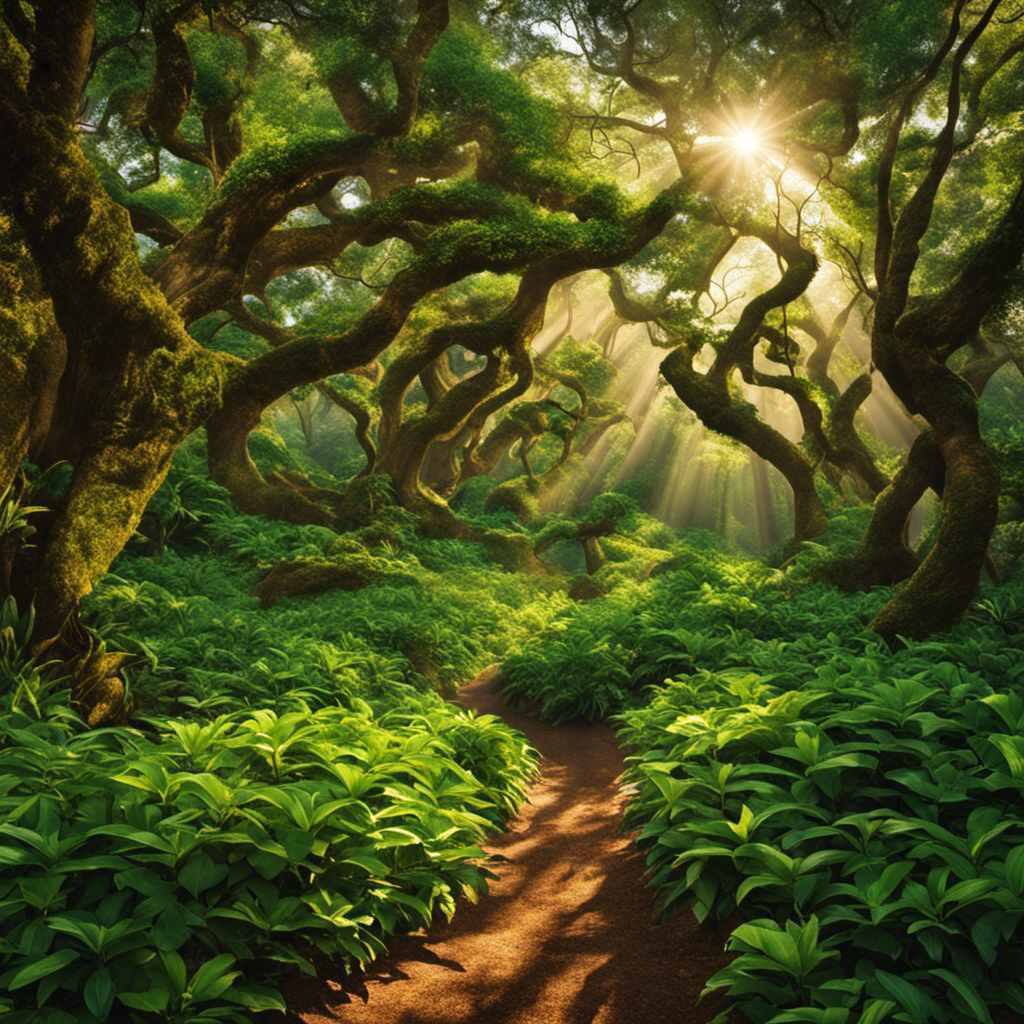
Ah, the charming potion known as yerba mate. As I find myself here, indulging in a sip from my gourd, reveling in the stimulating tastes, I am led to ponder: From where does this enchanting drink originate?
Well, my curious friends, fret not, for I have embarked on a journey of research to uncover the origins of yerba mate. This humble plant, native to the lush lands of South America, holds a rich history that stretches back centuries. From its discovery by indigenous cultures to its spread across Europe, yerba mate has captivated the taste buds of many.
Today, it continues to thrive, offering a wide variety of flavors and becoming a cornerstone of South American culture. Join me as we delve into the depths of yerba mate’s past, exploring its rituals, sustainable farming practices, and even its presence in popular culture.
So sit back, relax, and let us embark on a voyage to discover the roots of yerba mate.
Key Takeaways
- Yerba mate is primarily grown in South America.
- It has indigenous origins and is a traditional drink of the Guarani people.
- Yerba mate has historical significance and has been used by indigenous tribes for medicinal purposes.
- It is seen as a symbol of cultural identity and there is an emphasis on preserving traditional practices and customs.
The Discovery of Yerba Mate
Now, let’s take a journey back in time to when I discovered the origins of yerba mate.
The discovery of yerba mate can be traced back to the indigenous knowledge of the Guarani people in South America. They were the first to recognize the numerous health benefits and cultural significance of this plant.
Yerba mate was not only consumed as a beverage but also played a vital role in their rituals and social gatherings. The Guarani people believed that yerba mate had medicinal properties and used it for its stimulant effects.
This indigenous knowledge eventually spread to other cultures in the region, and yerba mate became an integral part of their daily lives.
Transitioning into the subsequent section about indigenous culture and yerba mate, it is fascinating how this plant shaped the traditions and customs of these communities.
Indigenous Culture and Yerba Mate
Indigenous communities have a rich history of cultivating a traditional beverage that is deeply rooted in their cultural heritage. Yerba mate, a drink made from the leaves of the yerba mate plant, holds great significance in indigenous traditions. It is often consumed during social gatherings and ceremonies, symbolizing unity and friendship. The preparation and sharing of yerba mate is a ritualistic practice, passed down through generations, and holds a special place in indigenous culture.
Yerba mate is prepared by steeping the leaves in hot water and sipped through a metal straw called a bombilla. The plant is native to the South American rainforests and has been cultivated by indigenous communities for centuries. Yerba mate is known for its energizing properties and is often used for medicinal purposes. Indigenous communities have a deep respect for the yerba mate plant and consider it a gift from the gods.
Yerba mate’s cultural significance and importance in indigenous traditions paved the way for its spread to Europe, where it gained popularity as a unique and flavorful beverage.
Yerba Mate’s Spread to Europe
When it comes to the spread of yerba mate to Europe, two key points stand out.
Firstly, the influence of Spanish colonization played a significant role in introducing yerba mate to Europe. The Spanish colonizers, who had established colonies in South America, discovered yerba mate and recognized its potential as a valuable commodity. They began exporting yerba mate back to Europe, allowing it to gain exposure and popularity among European consumers.
Secondly, during the 17th and 18th centuries, yerba mate gained immense popularity among European nobility. It became fashionable among the upper classes, who embraced it as a trendy and exotic beverage. Yerba mate was not only consumed for its taste but also for its perceived health benefits. This led to its widespread consumption and cultural significance during that time period.
As a researcher, I find it fascinating to explore both the historical context of Spanish colonization and the cultural impact of yerba mate’s popularity in Europe. These factors played a crucial role in the spread and acceptance of yerba mate in European society.
The Influence of Spanish Colonization
During Spanish colonization, the influence on yerba mate’s origins became undeniable. The Spanish had a significant impact on indigenous culture in South America, including the introduction of yerba mate.
The Spanish settlers recognized the potential of yerba mate and began cultivating it on a larger scale. They also established trade routes to export yerba mate to Europe, which greatly contributed to the South American economy.
Yerba mate quickly gained popularity among the European elite, who saw it as a exotic and luxurious beverage. Its demand skyrocketed in the 17th and 18th centuries, leading to increased production and trade.
The Spanish colonization not only shaped yerba mate’s origins but also set the stage for its popularity in the following centuries.
Yerba Mate’s Popularity in the 17th and 18th Centuries
The popularity of yerba mate soared in the 17th and 18th centuries. European elites embraced it as a luxurious and exotic beverage, leading to increased production and trade.
During this time, yerba mate became a symbol of social status among the European upper classes. They would gather together to enjoy the drink in elaborate ceremonies.
The 17th century saw a significant increase in yerba mate trade. European merchants imported large quantities of the herb from South America. Yerba mate became a staple in European households, with specialized containers and utensils designed for its preparation and consumption.
As the demand for yerba mate grew, so did its production in South America. Plantation owners employed indigenous laborers to meet the European market’s needs.
This rise in popularity set the stage for yerba mate’s eventual dominance in South America.
The Rise of Yerba Mate in South America
Get ready to explore the fascinating rise of yerba mate in South America – it’s a journey you won’t want to miss.
As a research-based beverage, yerba mate offers numerous health benefits. Firstly, it is rich in antioxidants, which help to protect the body against cell damage and reduce the risk of chronic diseases.
Secondly, yerba mate contains caffeine, providing a natural energy boost and improving mental focus. Additionally, it is known to aid digestion and boost the immune system.
Beyond its health benefits, yerba mate has a strong social aspect. In South America, it is often enjoyed in groups, with the mate gourd being passed around and shared among friends and family. This communal experience fosters a sense of connection and bonding.
Now, let’s delve into the current state of yerba mate today.
Yerba Mate Today
Immerse yourself in the vibrant culture of South America as you witness the widespread popularity and daily consumption of this invigorating herbal beverage.
Yerba mate, a traditional drink deeply rooted in the region’s history, continues to captivate locals and visitors alike. Beyond its rich flavor and social significance, yerba mate is renowned for its numerous health benefits.
Packed with antioxidants, vitamins, and minerals, it boosts the immune system, aids digestion, and enhances mental focus. The brewing techniques are an art form in themselves, with variations across different countries and regions.
From the traditional gourd and bombilla method in Argentina to the Tereré cold infusion in Paraguay, each technique brings out unique flavors and characteristics.
As we delve into the next section about yerba mate production and harvesting, we will explore the intricate process that brings this beloved beverage to life.
Yerba Mate Production and Harvesting
Contrary to popular belief, the process of cultivating and harvesting yerba mate involves meticulous attention to detail and a deep understanding of the plant’s needs.
Yerba mate production begins with the careful selection of the yerba mate plants, which are native to South America. These plants require a specific climate and soil conditions to thrive, making Argentina, Paraguay, and Brazil the main producers.
The harvesting process is done by hand, as only the leaves and young branches are collected. After harvesting, the leaves are dried and then ground into a fine powder, which is used to make the traditional yerba mate beverage.
This production process ensures the highest quality and flavor of the final product.
Transitioning into the subsequent section about yerba mate varieties and flavors, it is fascinating to explore the wide range of choices available to yerba mate enthusiasts.
Yerba Mate Varieties and Flavors
When it comes to yerba mate, there is a wide variety of flavors to choose from. Traditional yerba mate offers a rich and earthy taste, while flavored yerba mate adds a burst of fruity or herbal flavors.
Additionally, there are popular blends and combinations of yerba mate, where different herbs and ingredients are mixed together to create unique and delicious flavor profiles.
Exploring these different varieties and flavors is a great way to discover new and exciting yerba mate experiences.
Traditional vs. Flavored Yerba Mate
Enjoy the rich, authentic taste of traditional yerba mate or indulge in the delightful flavors of flavored yerba mate. When it comes to traditional vs. flavored yerba mate, there are a few key differences to consider.
-
Authenticity: Traditional yerba mate is known for its earthy and robust flavor, which comes from the leaves of the yerba mate plant. Flavored yerba mate, on the other hand, offers a wide range of flavors such as mint, citrus, and berry, which are added to enhance the taste.
-
Health Benefits: Both traditional and flavored yerba mate offer a variety of health benefits. Traditional yerba mate is rich in antioxidants, vitamins, and minerals, which can boost energy levels and improve mental focus. Flavored yerba mate often includes additional ingredients like herbs and fruits, which can provide additional health benefits such as immune support or stress relief.
-
Personal Preference: Ultimately, the choice between traditional and flavored yerba mate comes down to personal preference. Some may prefer the bold, authentic taste of traditional yerba mate, while others may enjoy the added flavors and variety that flavored yerba mate provides.
Now, let’s explore popular yerba mate blends and combinations.
Popular Yerba Mate Blends and Combinations
Indulge in the enticing fusion of flavors found in popular yerba mate blends and combinations. Each sip unravels a symphony of taste that transports you to a world of sensory delight.
While traditional yerba mate preparations involve simple methods like hot water and a bombilla, the world of yerba mate has expanded to include a wide range of flavors and ingredients.
Some popular blends include yerba mate with citrus fruits like lemon or orange. These additions add a refreshing zing to the earthy flavor of the mate.
Other combinations feature herbs like mint or chamomile. These herbs add a soothing and aromatic twist to the mix.
These blends offer a delightful variation to the traditional yerba mate experience. They allow enthusiasts to explore new flavors while still enjoying the energizing benefits of yerba mate.
Now, let’s dive into the fascinating world of yerba mate rituals and etiquette.
Yerba Mate Rituals and Etiquette
Immerse yourself in the refined traditions and elaborate rituals surrounding yerba mate, a beverage deeply rooted in South American culture. When participating in a yerba mate ritual, you’ll find yourself transported to a world of social bonding and shared experiences. Here are some of the key rituals and etiquette surrounding yerba mate:
- The cebador, or host, prepares the mate gourd by filling it with yerba mate leaves and hot water, ensuring it’s ready to be passed to the first guest.
- The first sip, known as the ‘sacrificial sip,’ is taken by the cebador to ensure the mate is properly prepared before passing it to the next person.
- It’s customary to drink the entire contents of the mate gourd when it’s passed to you, without pausing or hesitating.
- Sharing the mate gourd fosters a sense of community and friendship among participants.
These rituals not only enhance the experience of drinking yerba mate but also symbolize the importance of unity and connection in South American culture.
Transitioning into the subsequent section about ‘yerba mate and sustainable farming practices,’ it’s crucial to understand the holistic approach taken by yerba mate producers to ensure the longevity of this beloved beverage.
Yerba Mate and Sustainable Farming Practices
Let’s delve into how yerba mate producers have embraced sustainable farming practices to ensure the long-term viability of this beloved beverage.
Yerba mate is traditionally grown in South America, primarily in countries like Argentina, Paraguay, and Brazil. However, as demand for this herbal tea has increased globally, producers have recognized the need to implement sustainable farming techniques to minimize the environmental impact of yerba mate cultivation.
These techniques include organic farming methods, such as avoiding the use of synthetic pesticides and fertilizers, as well as promoting biodiversity by planting native trees and shrubs alongside yerba mate crops. By adopting these practices, yerba mate producers are not only preserving the natural resources and ecosystems but also producing a high-quality, environmentally-friendly product.
As we transition into the subsequent section about ‘yerba mate in popular culture,’ it’s clear that sustainable farming practices play a crucial role in shaping the perception and consumption of this beverage.
Yerba Mate in Popular Culture
Yerba Mate has become a cultural icon, making appearances in movies, music, and even fashion. In film, yerba mate has been featured in various productions, adding an authentic touch to scenes set in South America. For example, in the movie ‘The Secret Life of Walter Mitty,’ the protagonist drinks yerba mate while exploring the stunning landscapes of Iceland. This highlights the global appeal of yerba mate and its ability to transcend borders.
In literature, yerba mate has also been mentioned in several works, showcasing its significance in different cultures. In Jorge Luis Borges’ famous short story ‘The Aleph,’ yerba mate is described as a symbol of Argentine identity.
It is fascinating to see how yerba mate has permeated popular culture, becoming not just a drink but a representation of a rich cultural heritage.
Frequently Asked Questions
What are the health benefits of consuming yerba mate?
Yerba mate has numerous health benefits. It’s packed with antioxidants, vitamins, and minerals that boost energy, improve mental focus, and support weight loss. Additionally, yerba mate production is mainly centered in South America.
How is yerba mate traditionally prepared and consumed?
Preparing yerba mate traditionally involves filling a gourd with dried leaves, then adding hot water. The infusion is sipped through a metal straw called a bombilla. This ritual fosters a sense of connection and tranquility, like a warm hug from an old friend.
Are there any cultural or social rituals associated with drinking yerba mate?
There are several cultural rituals associated with drinking yerba mate. It is common for people to gather in circles and share a gourd of mate. There is a strict drinking etiquette that involves passing the mate to each person clockwise. Some communities even have yerba mate ceremonies to celebrate this traditional beverage.
How does yerba mate compare to other popular caffeinated beverages like coffee and tea?
Yerba mate is a sophisticated and invigorating beverage that rivals energy drinks in terms of caffeine content, while offering a more natural boost. Compared to matcha tea, yerba mate provides a unique flavor profile and a well-rounded energy experience.
Can yerba mate be grown and harvested outside of South America?
Yerba mate can be grown and harvested outside of South America in alternative sources of production. However, there may be significant environmental impacts associated with cultivating yerba mate outside of its native region.
Conclusion
In conclusion, Yerba Mate is truly a hidden gem that has captivated the hearts of many. Its journey from its discovery by indigenous cultures to its spread across Europe and South America is a testament to its popularity and versatility.
Today, Yerba Mate continues to thrive, offering a wide range of varieties and flavors to suit every palate. Its rituals and etiquette add a touch of charm to the drinking experience. Moreover, Yerba Mate’s commitment to sustainable farming practices ensures a guilt-free indulgence.
As it continues to make appearances in popular culture, Yerba Mate’s legacy is sure to endure for generations to come. So why not give this delightful beverage a try and join the Yerba Mate craze?
Justin is a seasoned author, coffee and tea enthusiast, and an essential member of the Cappuccino Oracle team. With a keen appreciation for the complexities of coffee, coffee alternatives, and tea, Justin has dedicated his professional career to exploring these realms and sharing his insights with readers worldwide.
Justin’s immersion in the world of coffee, coffee alternatives, and tea began at a young age, kindling a passion that extended beyond mere consumption. This love for these beverages led him to combine his talent for writing with his devotion to coffee and tea, bringing him to Cappuccino Oracle as a dedicated author.
-

 Americano4 weeks ago
Americano4 weeks agoHow to Make Americano With Moka Pot
-

 Americano2 weeks ago
Americano2 weeks agoHow to Make Korean Iced Americano
-

 Americano4 weeks ago
Americano4 weeks agoHow to Make Americano With Bialetti
-

 Americano4 weeks ago
Americano4 weeks agoHow to Make Dutch Bros Americano
-

 Americano1 week ago
Americano1 week agoHow to Make an Iced Americano With Nespresso
-

 Americano3 weeks ago
Americano3 weeks agoHow Many Shots of Espresso for 16 Oz Americano
-

 Americano4 weeks ago
Americano4 weeks agoHow to Make a Hazelnut Americano
-

 Turmeric Tea2 weeks ago
Turmeric Tea2 weeks agoTurmeric Saffron Tea







